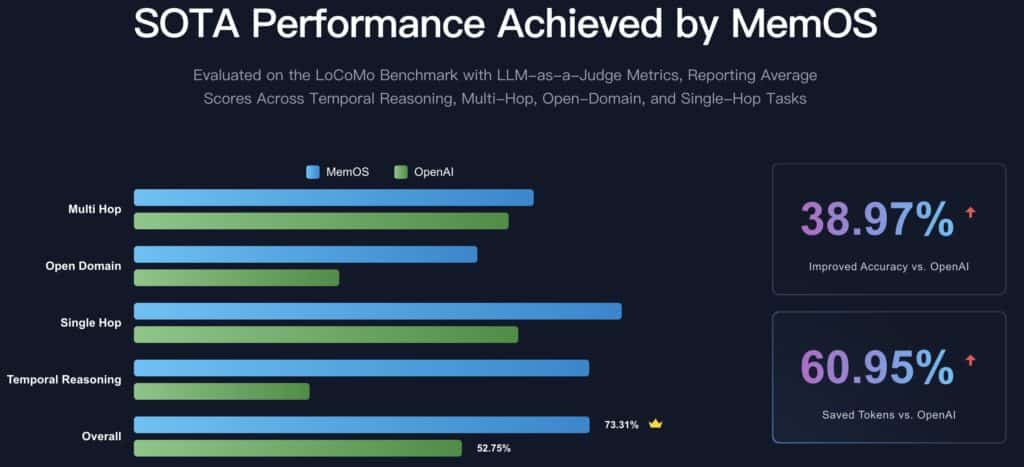A modular architecture to give generative artificial intelligence long-term memory
In the fast-paced world of artificial intelligence, the development of large language models (LLMs) has marked a groundbreaking milestone. However, one of their most obvious limitations remains their ability to recall information beyond a single conversation. In this context, the emergence of MemOS, a memory operating system for LLMs, signifies a paradigm shift toward more contextual, persistent, and personalized intelligence.
What is MemOS and why does it matter?
Developed by the MemTensor team, MemOS is an open-source platform designed to integrate with LLMs and provide them with structured, dynamic memory. Unlike other approaches that simulate recall through context windows or relevant information rerouting, MemOS offers a modular and scalable solution based on an architecture called MemCube.
This system enables storing, retrieving, and managing multiple types of memories: text, activations (KVCache), and adaptation parameters. The core idea is simple yet powerful: bringing cognitive persistence to the heart of the AI model without altering its basic architecture.
“MemOS is to LLMs what an operating system was to the personal computer: an interface between raw capability and intelligent use,” explain its creators.
Performance comparison: Memory that reasons
Results from MemOS on the LOCOMO benchmark show significant improvements over current context memory solutions (like LangMem or Zep) and the standard OpenAI implementation. Notably, in temporal reasoning tasks, MemOS improves performance by over 159%.
| Task | OpenAI | MemOS | Improvement |
|——–|———|——–|————–|
| Overall average | 0.5275 | 0.7331 | +38.98% |
| Multi-hop reasoning | 0.6028 | 0.6430 | +6.67% |
| Open domain QA | 0.3299 | 0.5521 | +67.35% |
| Single-hop reasoning | 0.6183 | 0.7844 | +26.86% |
| Temporal reasoning | 0.2825 | 0.7321 | +159.15% |
This performance positions MemOS among leading solutions in augmented memory for LLMs, with direct applications in smart assistants, autonomous agents, and high-context enterprise systems.
Modular architecture: MemCube and beyond
MemOS relies on a modular architecture of independent yet interoperable components:
– MemCube: the basic memory unit that stores textual data, activations, and parameters.
– MOS (Memory Operating System): the orchestration layer that manages multiple memory cubes, users, and contexts.
– Unified APIs: simple access to functions like adding, searching, or filtering memories, with extensibility for new data sources.
MemOS supports integration with tools such as Ollama, Hugging Face Transformers, and services like OpenRouter, making it usable both in the cloud and in local or private environments.
Use cases and future developments
MemOS has been designed with real-world deployment environments in mind. Some already deployed use cases include:
– Conversational assistants with personal memory (CRM, education, healthcare).
– AI agents that learn from previous interactions (technical support, legal AI).
– AI systems requiring narrative or historical continuity (storytelling, gaming, simulations).
Its creators are working on future versions that include:
– Multimodal memory (text, image, audio, video).
– Distributed memory with secure cloud or blockchain storage.
– Multi-account LLM agents with persistent, differentiated profiles.
– Neural links between models via shared parametric memory.
The first step toward AI with a sense of time
The concept behind MemOS — an AI that remembers and reasons over time — opens the door to truly intelligent systems capable of gradually and evolutionarily interacting with people, tasks, and contexts.
“MemOS is the operational memory of a truly useful AI. It doesn’t just respond—it remembers you,” say its developers.
The version MemOS 1.0 “Stellar” is already available as a preview on GitHub (under the Apache 2.0 license). The community is encouraged to contribute, test, and incorporate this technology into their own conversational agents and cognitive systems.

